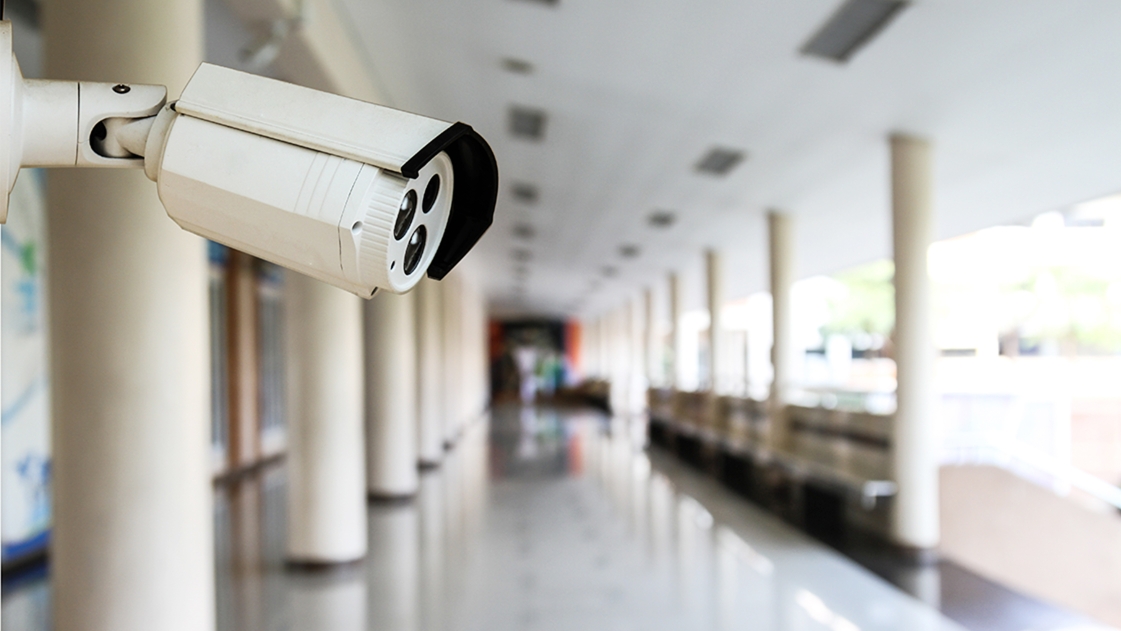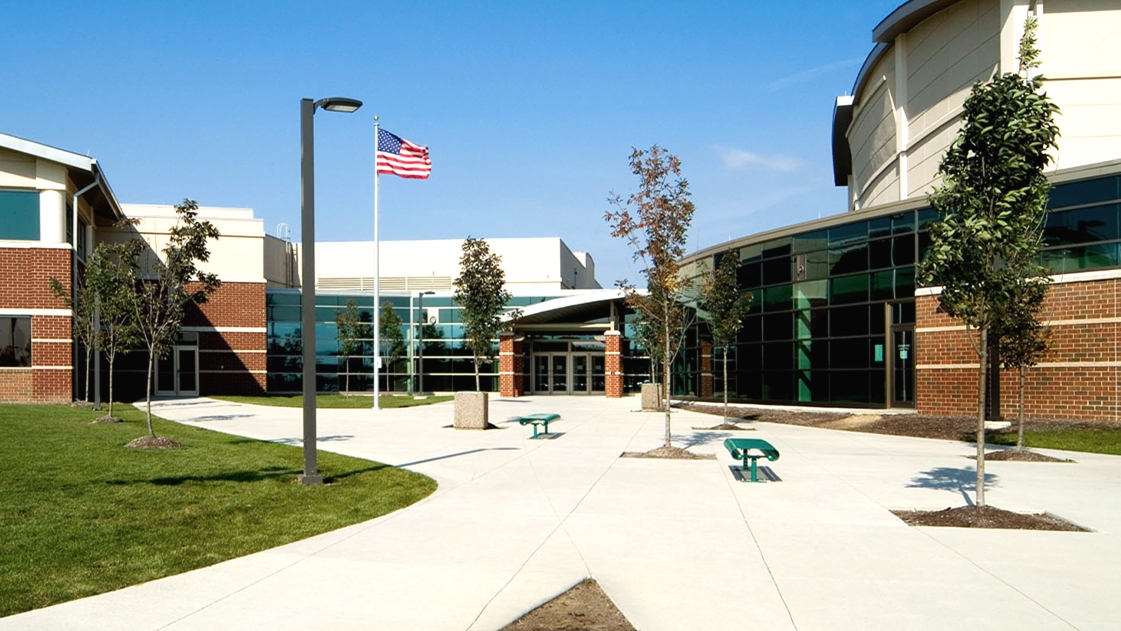School Safety: Six Design Tips for Increased Security

Children are the most precious and vulnerable segment of our population, and the schools they attend should be safe spaces. Unfortunately, threats and personal attacks on schools have shattered our sense of security, and occurrences of school shootings continue to rise. From Sandy Hook to Parkland, Florida, these tragedies have made national headlines and spurred intense and complex conversations on what can be done to prevent similar disasters.
Architects can contribute meaningful input on how school design can influence safety and security. Every year we work with dozens of school districts to build or remodel their buildings. For each of these projects, safety is always top-of-mind. While there is not a one-size-fits-all solution, it’s important that the school creates a “security/crisis vision and control” plan (SCVC) that aligns with the building and site design. This plan should begin with a complete professional security assessment that provides a detailed report including a summary of risks and threats, as well as recommendations and estimated costs for how to mitigate them. It should then involve key stakeholders such as the school superintendent, director of facilities, first responders, architects and designers, security consultants, school resource officers, and others that can guide implementation of new policy and practice.
Planners, architects, and designers play an important role in implementing and integrating crucial protective measures into the design process that can strengthen and support the overall SCVC plan. While implementing strong security measures, the goal is to balance them with the freedom of movement that defines a nurturing learning environment.
Following are six design principles we recommend considering when master planning a school building and campus and developing a thorough, assessment-driven SCVC plan.
Lines of Sight
All types of potential school dangers can be reduced with more direct and indirect observation, both inside school walls and on the grounds outside. Visibility of what’s happening within and around a school is critical to observing behavior. Luckily, today’s school designs are moving toward increased transparency and connectivity with unobstructed lines of sight leading to increased visibility. Clear lines of sight are important throughout educational, group-use, and community-use areas so that all occupants can be seen, and behaviors monitored.
This is especially important at the main entrance to the building. Main entrance points should be limited to one or two primary points with adequate security video camera, intercoms and clear sight lines, so that welcome staff can easily monitor them and alert security when necessary. Building entrances with simple, open layouts that eliminate nooks and corners provide clearer lines of sight, helping with early detection of unwanted and potentially dangerous behaviors. Continuing open lines of sight throughout the whole building allows for increased visibility facility-wide.
Controlled Access and Exit Points
Visitor management plays a key role in overall building security. More and more, schools are being used as shared community-use facilities. This means that many visitors other than students and staff are coming and going, and doors and entrances are optimal security concerns as they allow access to the facility to a wider range of people.
As visitors are coming to school to watch their child’s drama performance in the auditorium, gain access to the gym, or pick up their student at the end of the school day, it’s important to have a clearly defined primary entrance that is highly observable. Additionally, creating a secure main entrance vestibule welcomes visitors into a weather protected “sally-port,” allows key initial communication opportunities to occur with the visitor and the school administrators, and then guides the visitor to the next appropriate space where they can check in prior to gaining access to school. If a visitor appears agitated or upset, the use of a secure vestibule with clear sight lines into that area allows administrators to observe behavior and have time to act on their observations.
On the flip side, design must also allow ease of escape by providing more than one exit from various locations within the school. These exit doors require control measures and policy on how they are operated. For example, doors can be retrofitted with monitoring devices such as door position switches, which send notice to school staff, the security monitoring company, or intruder responders if the door is open. All exterior doors should be monitored to determine if they are fully closed and locked.
Compartmentalization and Wayfinding
With increased foot traffic from guests, it’s important to be able to compartmentalize community shared space from academic space. Visitors want to understand the territory in which they can freely roam, and not create unnecessary alarm to the school’s users. The use of cross-corridor doors creates zones for the building depending on the various uses and offers another layer of security. Strategically designed room adjacencies with thoughtful cross-corridor door locations can provide controlled lock-down opportunities. Compartmentalizing and zoning a school through active design allows “soft” security measures to occur while not sacrificing the emotional environment.
Clear communication through wayfinding signage can direct visitors how to find bathrooms, exit points, concessions, cafeteria and other commonly used areas. This added layer of guidance helps manage visitors’ movements within the building and around the site. Signage also provides assistance to active responders, defining the building’s various functions and identifying fire lanes, main entrances and the like.
Emergency Call Systems
Proactive communication is critical to a SCVC plan. Alarms to call for help or alert of an intruder should be placed strategically throughout the building. Previous designs have only been for teachers, and only they knew how to use them. Today, it’s important for everyone—including students and community members—to be able to trigger the alarm through a duress or panic button.
Through design and active training, it needs to become second nature to gravitate toward those alert stations in times of trouble.
Policies and Procedures
Naturally, many school districts have limited funding resources and don’t have the luxury of building from scratch to incorporate the many safety features used today. But existing buildings can also deploy many of these strategies. In reality, design only goes so far. Implementing the appropriate policies and procedures—whether in a new or old school building—is necessary to increase the success of building security infrastructure measures and SCVS plans.
When an emergency occurs within the school, staff and students must know how to effectively respond within mere moments. Practiced procedures produce effective results. The built environment must accommodate such response; namely, evacuation, reverse evacuation, lockdown, lockout, and shelter responses.
Thorough Training
Once policies are adopted, testing and training—just like fire drills—are imperative. Working solely with teachers and students is not enough. Drills should take place collaboratively and include both the school designers who created the built-in safety features and first responders who will be responding to the emergency.
Security is not a standalone capability; it is a critical design consideration that should be continually reviewed and scrutinized from the design phase through construction or rehabilitation and into building use.
Not one of these layers of security can solve the continuous safety concerns that schools are being challenged with today. All layers recommended by trained security professionals and implemented by an experienced design team—including clean building and site layouts, decentralized offices, operational safety, technical safety, focused lighting, protective materials, clear sight lines, and many others—need to work hand-in hand to create the safest environment possible.


